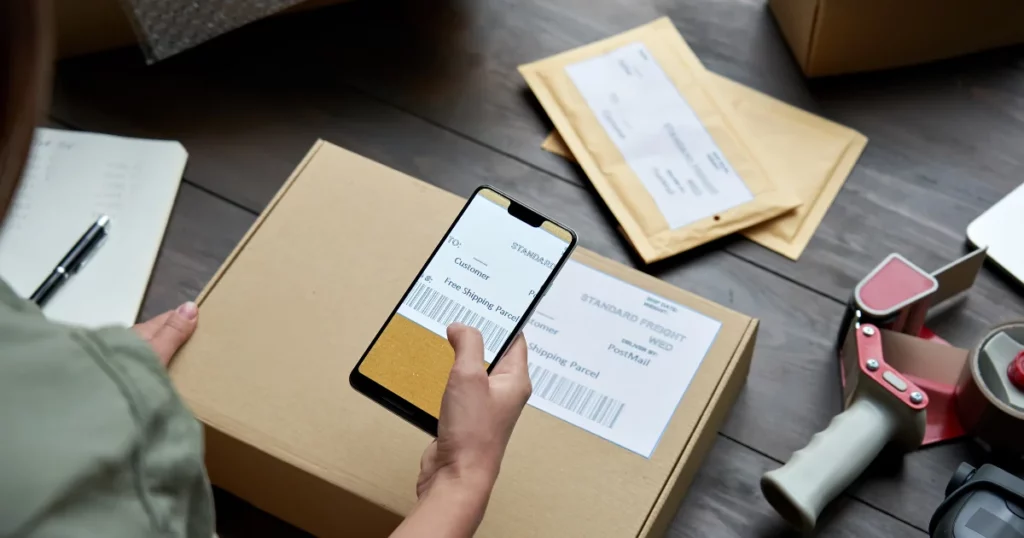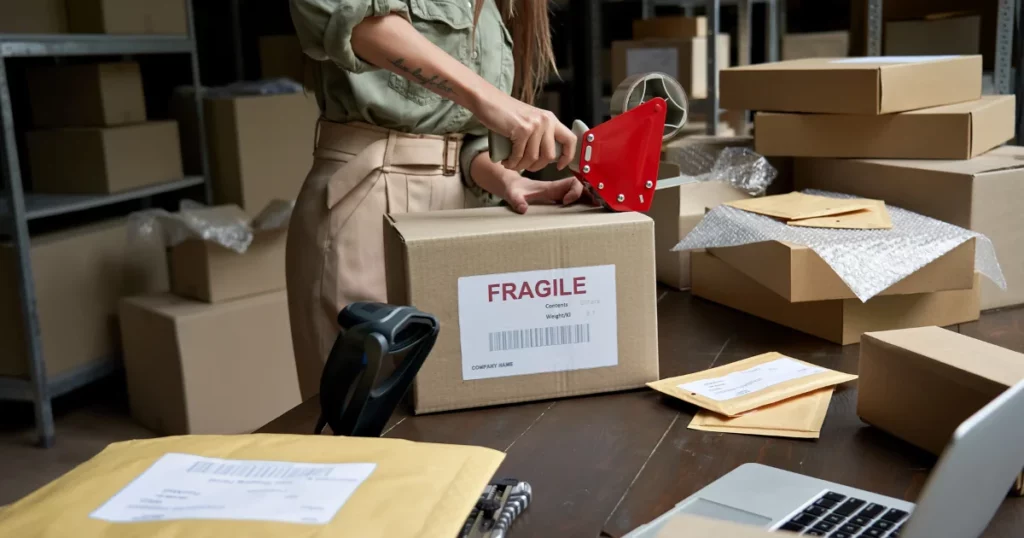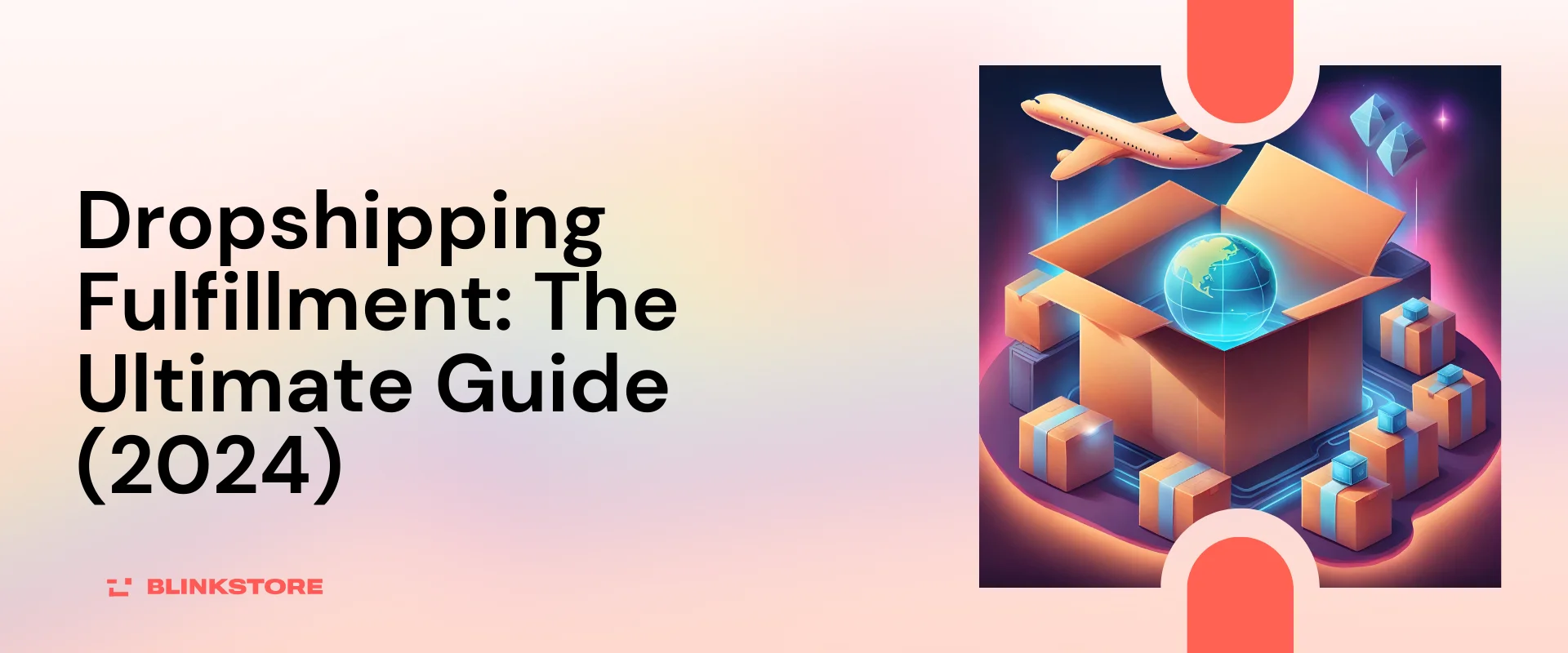Dropshipping has steadily grown in popularity in recent years, especially among entrepreneurs and small business owners looking to sell products online without maintaining their inventory. This fulfillment method in a retail environment allows the customers to purchase much like in an online store without much of the overhead costs and complexities that physical stores face.
Table of Contents
Introduction
Dropshipping fulfillment is a supply chain management method where the retailer does not keep goods in stock. This business model allows for minimal upfront investment and reduces the risk and complexity of managing inventory. It has gained widespread use in e-commerce as it offers low operations costs and good scalability.
What is Dropshipping Fulfillment?

Dropshipping fulfillment refers to the behind-the-scenes process of receiving and processing customer orders, communicating those orders to suppliers and manufacturers, packaging products, and shipping out orders to the final customer without the retailer ever directly handling the items themselves. It streamlines the transitioning of products from a third-party supplier to the customer, which happens after an online order is made via the retailer’s e-commerce store. The storeowner coordinates with various suppliers to provide a wide product selection without owning inventory.
Key players in Dropshipping fulfillment:
1. Dropshipping Retailers: Store owners are the people who buy from the customers, but order fulfillment is done invisibly by the other guys who buy in bulk from the same suppliers.They drive customer acquisition.
2. Wholesale Suppliers: Artisans, makers, industrial producers, logistics centers which keep the stock and deliver products to the clients according to the schedule of dropshipping merchants.They handle fulfillment.
3. Order Management Software: Such mechanisms like Shopify, Oberlo, Ordoro, Plentymarkets, etc that generate or receive and simultaneously sync orders between retailers and suppliers and also transfers information bilaterally.
4. Warehouses: Post collection of inventories by suppliers and dedicated third-party logistics (3PL) companies for storage in their facilities that continue to be delivered once a customer orders.
5. Payment Gateways Services: As for the checkout and fulfilling an electronic store, Stripe and PayPal process client payments in an SSL-enabled environment and guarantee the safety and smoothness of the operation.
eventually, these matters, which are functioning in a backstage, are also making very impactful accomplishments to the flow of the ecosystem that is dropshipping fulfillment. It is crucial for the drop shipping company to determine and deal with the right partners in order to facilitate the operation of the business and its growth.
Read more about: How to Start Dropshipping for Free in 2024 – Complete Guide
Dropshipping fulfillment Benefits

1. Low Overhead Costs
Dropshipping eliminates the need to invest in warehousing space, storage, or shipping facilities. Fulfillment is handled by suppliers, allowing retailers to operate online stores with minimal overhead. This greatly reduces financial risk and startup costs.
2. Easy Scalability
There is immense flexibility to scale product listings and order volume quickly without being constrained by physical inventory space or staffing. Fulfillment partners can absorb spikes in sales. Scaling down during slower periods is also easy.
3. Wider Product Selection
By leveraging a network of suppliers, retailers can provide customers access to a wider selection of products without having to stock them themselves. Fulfillment enables selling beyond typical inventory constraints.
4. Focus on Core Competencies
With suppliers handling packaging and order shipping, retailers can dedicate more time to high-value tasks like marketing, customer acquisition, and optimizing the buying experience.
5. Access to Fulfillment Expertise
Third-party fulfillment partners have existing warehouses, shipping routes, carrier relationships, and infrastructure. Working with them allows efficient tapping into these resources.
6. Improved Customer Experience
Customers receive products shipped directly from suppliers, often faster. Having a fulfiller manage suppliers and inventory availability behind the scenes enhances reliability and convenience.
By outsourcing order fulfillment to capable partners, dropshipping offers immense strategic and operational benefits for e-commerce retailers looking to scale successfully. The fulfillment process is the critical backbone powering an efficient customer experience.
Read more about: How to Start Branded Dropshipping in 2024: Ultimate Guide
Potential Challenges with Dropshipping Fulfillment

1. Longer Shipping Times
The most common pain point is often longer and less predictable shipping times compared to retail businesses shipping from a centralized warehouse. With multiple suppliers packing and sending from various locations, transit time inconsistencies and delays emerge.
Managing customer expectations from the outset around shipping timelines is crucial. Be transparent about the process and provide order status visibility. Implement software tracking to monitor delays and consider upgrades like expedited shipping on high-priority orders.
2. Quality Control Issues
Relying on third parties for fulfillment also introduces risks around product quality, accuracy, and packaging that are harder to control compared to retail-direct models. Close supplier vetting and periodic test orders help mitigate this.
Provide easy customer reporting for any defects and be proactive with resolving issues through supplier agreement policies and returns/refund processing. Maintain diligence even as order volumes grow.
3. Managing Customer Expectations
The key to mitigating common dropshipping orders and shipping challenges lies in intentionally shaping customer expectations upfront. Communicate policies around shipping times, product sourcing, returns processing, and other aspects that differ from typical retail purchase journeys. Meet or exceed the expectations that have been set through transparency and high-touch customer care. Proactively addressing points of friction or uncertainty stemming from the dropshipping model is imperative for retaining happy customers as your business scales.
Read more about: Is Dropshipping Legal in India? Understanding GST Rules
Key Steps in the Dropshipping Fulfillment Process

1. Finding Suppliers and Negotiating Contracts
The first critical step for retailers getting started in dropshipping is identifying and establishing relationships with reliable suppliers and manufacturers to provide inventory and fulfill orders. Suppliers are commonly found through online directories, trade shows, or existing business connections.
Once potential suppliers are identified, retailers negotiate contracts formalizing business agreements. Key terms include:
- Product pricing and minimum order quantities
- Inventory commitment from the supplier
- Payment methods and timeline
- Packaging, shipping methods, and tracking requirements
- Policy on returns/defects
Carefully vetting suppliers and product quality as well as nurturing strong relationships are key to successful long-term partnerships.
2. Integrations and Managing Orders
To seamlessly facilitate order information transfer from the retailer to various suppliers, e-commerce platform integrations and inventory management software are crucial. This allows customer order details to be automatically communicated from the retail store to the appropriate supplying partner to trigger packaging and shipping.
Supply chain transparency, inventory synchronization, and shipment tracking capabilities provided by software systems enable the retailer to remotely coordinate multiple suppliers while providing customers with order status and updates.
3. Packaging, Shipping, and Tracking
While the retailer does not physically handle fulfilling purchases, providing a polished, branded, and consistent experience comparable to direct retail fulfillment is key. Retailers work closely with suppliers on presentation, packaging, shipping methods, and tracking to monitor customer deliveries end-to-end.
Some considerations include:
- Branded packaging and inserts
- Carefully packed shipments
- Fast, affordable shipping rates
- Tracking number assignments and status updates
- Timely communication throughout the delivery process
Read more about: High Ticket Dropshipping Products – Key to Business Growth (2024)
Factors to Consider When Choosing a Supplier

1. Product Range and Depth of Selection
Look for suppliers that offer a wide range of products within your niche. This allows scaling up product listings without needing to integrate new suppliers frequently.
2. Order Fulfillment Reliability
Vet supplier fulfillment capability in terms of processing accuracy, shipping times, packaging quality, and order tracking visibility. Reliable fulfillment is crucial.
3. Quality Control and Assurance
Understand supplier protocols for ensuring product quality standards. This impacts customer satisfaction and dispute rates. Require quality sample approvals.
4. Inventory Information and Management
Suppliers should provide inventory level syncs, backorder status, and out-of-stock indicators so you can proactively avoid overselling.
5. Pricing Framework and Minimums
Evaluate wholesale pricing, discounts at volume, and minimum order quantities to calculate potential margins and order commitment requirements.
6. Dropshipping Experience
Choose an experienced dropshipping supplier dedicated to fulfillment operations instead of an off-the-shelf wholesale distributor for reliability.
7. Communication & Support Responsiveness
Supplier support teams should be responsive to inquiries about order issues, provide tracking, and resolve disputes promptly.
Closely evaluating suppliers across these parameters goes a long way in streamlining the post-purchase customer experience in a dropshipping model. Investing effort here pays dividends through improved long-term operational efficiency.
Read more about: Dropshipping Niches: 20+ New Opportunities with a Major Potential
How to Find Suppliers for Dropshipping

1. Search Dropshipping Directories and marketplace platforms
Dropshipping Directories and marketplace platforms like Salehoo, Worldwide Brands, Spocket, Modalyst, and Doba to list vetted suppliers accepting dropship orders—filter by product category, and location capabilities.
2. Attend Trade Shows and Industry Events
Networking with manufacturers and distributors at trade shows is a great way to discuss custom integrations and partnerships. Exchange contacts for follow-up conversations later.
Leverage Online Wholesale Directories Sites like ThomasNet and Europages list a broad range of wholesale suppliers, manufacturers, and distributors that may be open to dropshipping.
3. Search Popular Ecommerce Marketplaces
- Many sellers on platforms like Amazon, eBay, and Walmart also accommodate dropshipping orders. Filter search parameters accordingly.
- Look for “Dropshipping Ready” Badges Some supplier websites display badges highlighting they support integrated dropshipping. No need to ask about eligibility upfront.
- Ask Other Dropshippers for Recommendations Getting supplier referrals from existing dropshipping store owners in your category goes a long way since eligibility and reliability are endorsed.
- Communicate Dropshipping Needs When contacting suppliers, explain your e-commerce store’s focus, expected order volumes, and product types you wish to list upfront to qualify for eligibility.
Using a combination of these approaches is ideal to build a reliable supplier network that meets current and future inventory needs in a scalable way.
Read more about: 18 Reliable Clothing Dropshipping Suppliers India in 2024
Essential tips for dropshippers related to fulfillment

1. Vetting Suppliers and Products
Carefully evaluating potential suppliers is imperative to success.
Consider factors like:
- Years in business and financial stability
- Supply capacity and production capabilities
- Product range, quality, and accuracy of descriptions
- Fulfillment of infrastructure and processes
- Shipping rates and delivery performance history
2. Responsiveness to inquiries and issues
Request product samples and monitor initial fulfillment KPIs to validate reliability. Start slowly with new suppliers before scaling order dependence.
3. Quality Control and Customer Service
Stay actively involved with order fulfillment even if not physically handling products. Implement processes for quality control checks through periodic test orders or customer feedback analysis.
Provide stellar customer service and rapid resolution if issues emerge. Maintain ownership over the full customer experience even when relying on various suppliers behind the scenes.
4. Inventory and Order Management
Use inventory management software to maintain real-time visibility into supplier stock levels synchronizing with store listings. Avoid overselling based on outdated inventory data, which is a common pitfall for new drop shippers.
Carefully monitor peak sales periods to plan inventory needs in coordination with suppliers. Implement systems to efficiently track and allocate orders across the supplier network. Be transparent with customers about shipping estimates and potential impacts from backorders.
Proactively planning, coordinating with suppliers, and monitoring software systems provides essential visibility and risk mitigation for smoothly fulfilling rising order volumes as a dropshipping business scales.
Read more about: Is Dropshipping Worth It in 2024?
Conclusion
In closing, establishing reliable dropshipping order fulfillment processes is truly the backbone of running a successful e-commerce business on this model. It ties the entire supply chain ecosystem together and enables the superior customer experiences that are imperative for scaling up sales.
Dropshipping fulfillment may happen behind the scenes, but its importance cannot be understated. It is the engine that keeps this entire retail model running smoothly. Setting this up for long-term efficiency and scalability is what enables retailers to powerfully compete in the world of modern digital commerce.
FAQs on Dropshipping Fulfillment
What is the difference between dropshipping fulfillment and traditional e-commerce fulfillment?
Dropshipping allows retailers to sell products without keeping inventory. Orders are fulfilled directly from 3rd party suppliers to customers. Traditional models require merchants to buy inventory upfront and fulfill orders from their warehouses.
What are the benefits of dropshipping fulfillment?
Dropshipping fulfillment benefits include lower overhead costs, easier scaling, no inventory risk, and the ability to offer more products without stocking them. Suppliers handle packaging and shipping logistics.
What kinds of businesses utilize dropshipping fulfillment?
Online retailers selling everything from apparel to home goods, electronics, beauty products, and niche hobby items leverage dropshipping across many industries. It allows anyone to start online stores more easily.
What key tasks are involved in dropshipping fulfillment?
Key tasks involve integrating supplier APIs, managing orders across suppliers, tracking shipments, consolidating customer communications, handling returns/exchanges, and providing support.
What does a typical dropshipping order process look like step-by-step?
The customer places an order on the retailer’s online store. Order information is automatically sent to the supplier. The supplier packages & ships the product directly to the customer. The retailer provides support while keeping the customer updated.
How do you choose reliable suppliers for dropshipping fulfillment?
Vet suppliers thoroughly across factors like reliability, product range, order accuracy, quality assurance processes, inventory visibility provided, and overall responsiveness. Getting referrals from existing drop shippers also helps identify good partners.
What common dropshipping fulfillment issues should retailers prepare for?
Common issues include shipment delays, inventory stock-outs, order processing errors by suppliers, incorrect customer addresses, and product quality complaints. Having processes to handle disputes and compensate customers helps manage such problems.
How can drop shippers provide transparency on order status?
Tools like automated order status emails, shipment tracking links from suppliers, and order status pages allow customers access to the latest information. Proactively flag delays.
What best practices can improve dropshipping fulfillment efficiency?
Best practices include thorough supplier vetting, integrated order flows, bulk uploading product catalogs, minimizing touchpoints, having customer support teams ready for issues, and continuously monitoring analytics.
How do you resolve problems that arise mid-fulfillment?
Being proactive with customer communication and providing compensation like discounts on future purchases or gifts can help resolve fulfillment problems. Identify root causes with suppliers to prevent recurrences.
What technologies and tools aid dropshipping fulfillment management?
Shopify apps like Oberlo, Spocket, Dropified, and PlusFastTrack exist alongside multi-channel tools like 3PL Central WMS and ShipStation to help retailers consolidate and manage orders across suppliers.
What does the future look like for dropshipping fulfillment innovations?
AI is helping match products to ideal suppliers automatically. Predictive analytics prevents stockouts. Automated warehouse robots improve processing efficiency. Blockchain enables supply chain transparency. Augmented reality will enhance quality assurance.
How can those new to dropshipping optimize fulfillment processes early on?
New drop shippers should thoroughly test order flows with suppliers before launch, have customer service teams ready for launch, start lean with a focused product lineup, monitor key metrics diligently to identify bottlenecks and focus on quality over quantity.
